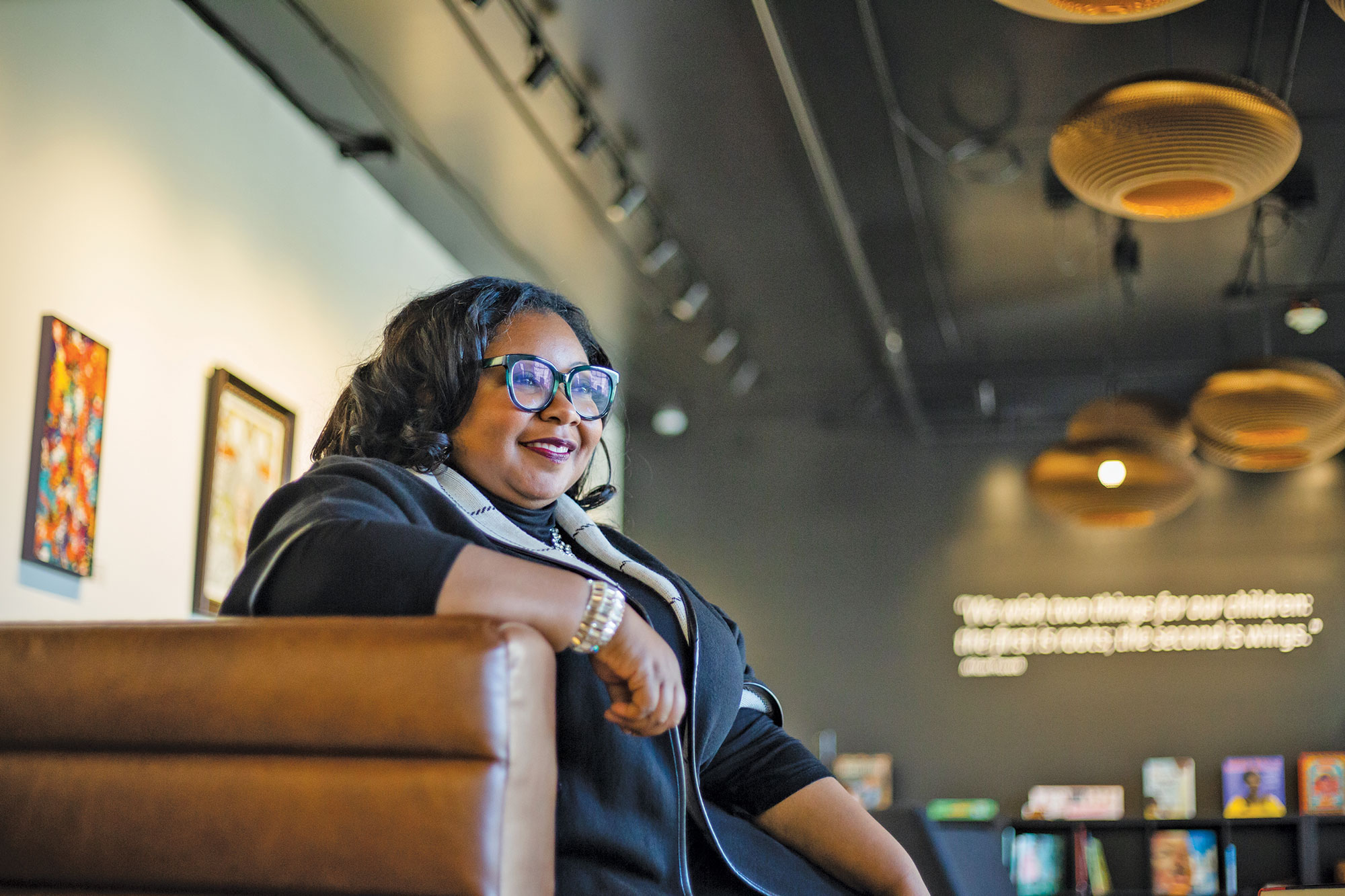Stories to tell Stories to tell Stories to tell
The Northwest African American Museum tells stories of Black excellence for all visitors

The Northwest African American Museum tells stories of Black excellence for all visitors
In November 1985, a group of artists and activists broke into the shuttered Charles Colman School building and started an eight-year occupation of the space, demanding that it be turned into an African American heritage museum. The group of about 40 included Charles James, ’75, Omari Tahir-Garrett, Michael Greenwood and Earl Debnam. The four remained, lived in the space without heat or running water, and undertook what would be one of the longest acts of civil disobedience the country has seen.
The building had long been a landmark for the Black community, serving since the 1940s as the school for most of Seattle’s African American children as well as for many of Chinese, Japanese and Filipino ancestry. But the school was closed in 1985 because of the expansion of Interstate 90 nearby. By that time, leaders in Seattle’s African American community had their sights set on the building for a museum.
It wasn’t until 1993 under the leadership of Norman Rice, ’74, Seattle’s first African American mayor, that the city agreed to fund the museum, and the occupation came to an end. An advisory committee was formed, and Royer appointed UW alum Bob Flowers to head the museum board. From there, the story becomes complex with bureaucratic challenges and division among the early activists and Black civic leaders. But through it all, the dream of a museum survived.
In 2003, the building was designated as a historic landmark because it’s connected to the cultural heritage of the community, because it’s architecturally distinctive and because it’s a known and visible feature of the neighborhood. Today, an inviting 19,000-square-foot space dominates the ground floor of the vintage brick building. It holds galleries for art and history as well as an artist’s studio, offices, a gift shop and a children’s reading corner. At one end of the history area, a display highlights African Americans in Washington’s history. And there, in the middle of it is Manima Wilson, the first African American to graduate from the UW—circa 1911.
Click or tap photos to enlarge and read captions.
The Northwest African American Museum first opened its doors in 1998, with the first director Carver Gayton, ’60, ’72, ’76. His tenure was followed in 2008 by artist Barbara Earl Thomas, ’73, ’77. The first exhibit featured the works of world-renowned and Seattle-based artists James W. Washington Jr. and UW Professor Emeritus Jacob Lawrence. Over the years, it has grown and expanded… finding new ways to tell the community’s stories.
“When I arrived in 2017, the museum was moving into it’s 10-year anniversary looking for new energy, fresh programs and new approaches to community engagement,” says LaNesha DeBardelaben, president and CEO. DeBardelaben came to Seattle with a breadth of experience that included a leadership role at the Charles H. Wright Museum of African American History in Detroit and a stint as president of the national Association of African American Museum’s board of directors. She is also pursuing a Ph.D. in the history of education at the UW.
From its founding, the museum’s story is interlaced with UW people and influence, she says. One of the musuem’s innovative projects featured a UW-developed program called Interrupting Privilege, which was led by Professor Ralina Joseph. It included UW students and was based out of the museum, where it would be more accessible to its community participants. “We open up the museum space for empowering conversations regarding dismantling inequities, improving radical listening and tooling up ourselves for activism,” says DeBardelaben. “We are dedicated to culture, education, empowerment and informed activism.
“We are in the Pacific Northwest, where there are not many spaces that center and celebrate Black excellence and Black representation,” she says. “Though this museum is dedicated to telling Black stories, it is for everybody. We seek to provide a sense of belonging and warmth and welcome to everybody.”
The museum’s offerings extend beyond the property. The Knowledge Is Power program sends 20,000 African American children’s books to children across the region. And to her knowledge, “we’re the first museum in the country to create their own African American museum choir,” she says. “We pop up in communities and sing.” The choir, known as the African American Cultural Ensemble, has brought joyful sounds to soccer games, graduations and community events across the state.
The museum shares the old school with the Urban League Village, an affordable housing project that offers 36 units.
Within a half-hour of opening on a recent weekday morning, several groups were already inside the galleries exploring the history of Black settlers and luminaries in Washington.
Lead photo: LaNesha DeBardelaben is the President and CEO of NAAM.